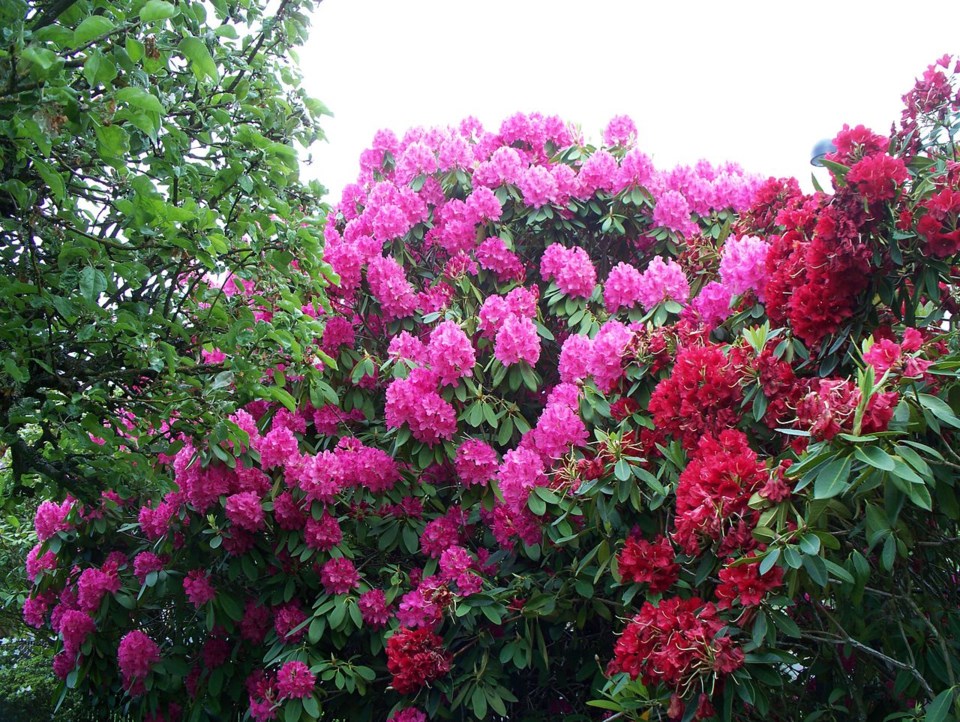Rhododendrons are the shrubs most likely to make gardeners happy in the Pacific Northwest — that’s because rhodos love our acidic soil, mild temperatures, large number of canopy trees and our (usually) high rainfall.
Even better, the shallow roots of rhodos make them easy to transplant. Also, weeds are reluctant to grow underneath them because the heavy, evergreen leaves block light. Then there are the spectacular flower clusters in spring.
As well, it’s easy to find a rhododendron to suit your garden because there are over 1,000 species and innumerable cultivars. They’re popular with plant breeders because they hybridize very easily.
Breeders also like rhodendrons that are easy to work with. These selections will root easily, resist rhododendron diseases and flower early.
Especially for people in smaller space it’s important to choose varieties that they love the look of now and that won’t annoy them later by excessive growth.
Some rhododendrons can stretch far and wide as they get older. This means that pruning may be necessary if they’re planted near a door or under a window.
Hybrid rhodos with rough bark usually respond well to pruning. Smooth bark rhodos may have trouble — and both kinds are unlikely to flower on the new shoots for a few years
The dryness under roof overhangs and alkalinity from concrete foundations can also cause problems for rhododendrons.
People with very small space would do best with extremely compact rhododendrons. These include some nice purple-blues such as “Blue Bird” or “Blue Diamond” or the paler “Ramapo.” The small-leaf rhodos handle sun and moderate drying better than larger-leaf kinds. Large-leaf rhodos do best in fairly moist dappled shade.
Small-leaf rhodos tend to grow to about one metre high in 10 years according to nursery labels. These never mention subsequent height. But very old compact rhodos can be two metres and more. Many rhododendrons never stop growing.
Somewhat less compact but still small and shapely is the very popular “PJM” rhodo, which has very bright pink flowers. “PJM,” is densely branched, has leaves that are aromatic (when crushed) and turn a reddish-brown through winter. It usually reaches up to 2.4 metres and about 1.3 metres wide.
Another hugely loved and easily available rhodo family is the Yakushimanums (Yaks). These have compactly branched rounded bushes, which produce pink buds opening to pink or white flowers. These plants are very hardy and tolerant of harsh conditions.
Rhodos need to be planted in airy and acidic soil where bark and/or peat and compost has been added. Bark mulch is especially useful because it holds in moisture, adds acidity and helps to aerate the soil. It’s also very useful as a top dressing.
Anne Marrison is at [email protected].



